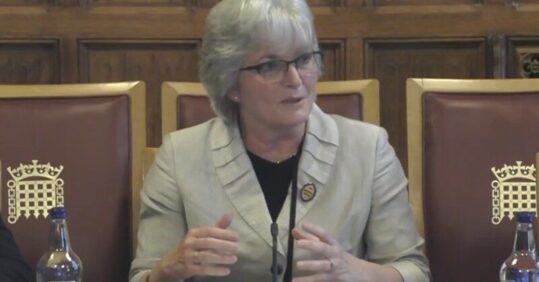Workforce ‘key challenge’ in primary and community care integration

The integration of primary and community care will not be successful without a sufficient workforce in place, the chief executive of the Queen’s Nursing Institute (QNI) has warned.
Giving evidence to a House of Lords committee earlier this month, Dr Crystal Oldman stressed the community nursing workforce was ‘depleted’ and that district nursing leaders were working several extra unpaid hours a week because of staffing gaps.
In addition, Dr Oldman claimed there was a lack of understanding surrounding community services and community nursing ‘because they are behind closed doors’.
The QNI chief executive was speaking during a House of Lords Integration of Primary and Community Care Committee meeting earlier this month, which comes as part of an ongoing inquiry.
Related Article: New preceptorship package for social care nurses
As well as holding several oral evidence sessions with key stakeholders in the field, the committee is seeking written evidence submissions until Monday 17 April 2023, and is ‘particularly keen’ to hear from those with direct experience of accessing or delivering primary and community care services.
Dr Oldman told members of the committee on Monday 13 March that the ‘main integration challenge’ was ‘having a sufficient workforce with the right skills in the right place to enable integration’.
‘Nothing will be able to happen unless we have the right skills in the right place,’ she said.
Community staff ‘want to make it work for the patients, and they do, but there is only so long that you can carry on doing that, especially post-Covid’, she warned.
A key ‘frustration’ for community nurses was that ‘other services are layered on top of them’.
‘If you have a challenge with workforce in your existing service and you layer another service on top of it, you deplete the existing workforce, because they go and work for a shiny new service that often has better terms and conditions,’ said Dr Oldman.
‘That is the absolute reality for the nurses we talk to in our networks and our Queen’s Nurses: they feel frustration.
Related Article: Applications to study nursing in England at ‘new low’
‘They say, “Could you please just invest in what you have?”.’
Another issue was that community nursing and services are ‘not well understood’.
Dr Oldman said this was because ‘they are behind closed doors’.
‘What fantastically skilled [allied health professional], nurses and carers do in people’s homes is not well understood; nor is the potential of that to be built upon to be part of an integrated service,’ she stressed.
A ‘lot’ of the feedback and evidence received by the QNI was ‘about nurse-led services in the community not being understood’.
‘It is work as imagined, rather than work as done,’ said Dr Oldman.
Related Article: Paul Rees appointed as permanent NMC chief executive and registrar
When asked for her key recommendations in relation to the integration and continuity of care between primary and community health sectors, Dr Oldman pointed to the issue of having a ‘depleted’ workforce and of ensuring nurses and colleagues are involved in decision making.
She stressed those working in GP practices, care homes and other community settings must be involved in decisions regarding their services and integration.
‘So often those who deliver the care are not involved in, for example, the creation of a new digital device or the way in which data is collected,’ said Dr Oldman. ‘They are not even asked; they are just given.’

See how our symptom tool can help you make better sense of patient presentations
Click here to search a symptom




